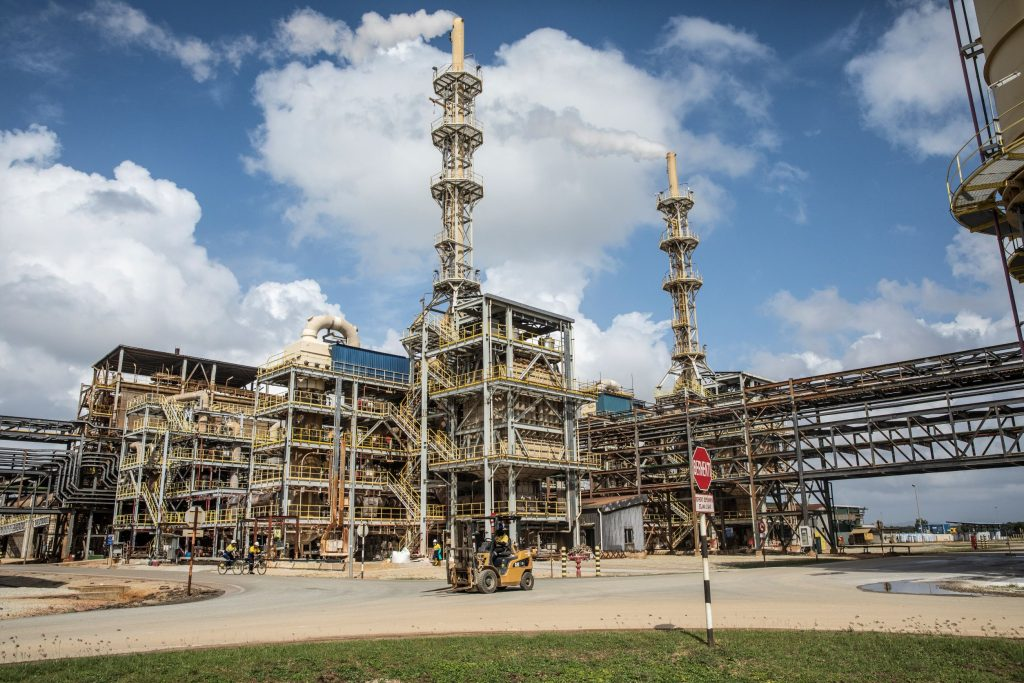The phrase “trump card” can be traced back to 15th century English card games.
“Trump” is a variation of triumph, so a trump card is one with the potential to win a game.
In this trade war, China’s triumph card is undoubtedly rare earth elements (REEs) and the magnets that are made with them. As we have discussed previously, China has a near-monopoly on many of the critical REEs.
Things reached a tipping point over the past few weeks, and several car manufacturers had to shut down production lines due to the lack of rare earth elements. These materials are in almost any high-tech product you can imagine, including smart phones, GPUs, and electric motors.
As reported by Bloomberg:
As slowing deliveries of products with obscure elements like dysprosium and terbium began to pinch industries from autos to defense, the US and other nations quickly hit their pain threshold. Ford Motor Co. and Suzuki Motor Corp. idled some production, Elon Musk said shortages were hurting his robotics business and governments rushed to secure the few suppliers outside of China. A two-way trade spat became a global crisis.
This lack of REEs caused Trump’s team to make the first move and reach out to China for negotiations. Fortunately the President was able to secure the supply of these critical rare earth elements (for now).
As part of the new deal, China has agreed to provide six-month licenses to Western companies which require rare earth magnets.
More from Bloomberg:
“They might well be restarting enough of the export licenses so that the commercial buyers can get what they need,” said Arthur Kroeber, partner and head of research at Gavekal, an independent research firm, who has written about China for more than three decades. “But they are not going to issue enough licenses so that people can stockpile. They are not going to give up their leverage.”
With export licenses only good for six months, that means China can play this trump card twice a year.
And considering the fact that the U.S. is probably 10 years away from self-sufficiency in mining, separating, and refining of REEs, it’s going to remain a problem for at least another decade.
Building Rare Earth Independence
Given the facts above, America and the broader West must focus on building rare earth self-sufficiency.
Historically this has been challenging, because China has become such a dominant force in the industry. Whenever someone outside China attempts to get a mine and refining operation going, Chinese companies flood the market with supply.
This crashes the price of rare earths and ruins the new project’s economics.
So to get out of this hole, America and other governments are going to have to subsidize and incentivize the rare earth industry. It’s going to take billions of dollars to properly kickstart.
Lynas: A REE Stock Worth Investigating
In the West, there are only a few publicly-traded companies which operate in the rare earth space.
One I’ve had my eye on for the last week in Lynas Rare Earths. It trades over the counter under ticker: LYSDY.
Lynas is an Australian company with operations in its home country, as well as in the United States and Malaysia.
Lynas is no microcap, it’s a $5.5 billion firm with more than $500 million in revenue. The company is slightly profitable.
The primary reason I’m interested in Lynas is its Malaysian operation. At that mine, Lynas has access to heavy rare earths, which are the rarer and more valuable type. The bulk of these types of REEs are found in ionic clays, not the hard rock deposits which are more common in the West.
These ionic clay deposits, which are rich in heavy rare earths, are mostly found in tropical environments. The largest deposits we know about are located in Brazil, China, and Malaysia.
To understand the difference between heavy and light rare earths, I strongly recommend reading this article.

Lynas’ Rare Earth Facility in Malaysia, source: Lynas
Lynas is the only publicly-traded company I’ve found with significant ionic clay heavy rare earth operations.
A separate Bloomberg article last week even called out Lynas by name:
The US could also intensify cooperation with Australia’s Lynas Rare Earths Ltd. — the largest producer of separated rare earths outside of China, although that operation still sends some of its oxides to the Asian nation for refining. While capacity is building in Brazil, South Africa, Japan and Vietnam, they can’t offer an immediate fix for US firms.
To be clear, Lynas is a high-risk, high-reward type of investment. I’m still doing my due diligence, and haven’t bought any (yet). So don’t rush out and buy without doing your own.
There are significant risks involved here. For example, this type of mining is environmentally toxic, so there’s always the risk that the local government pulls the required permits. It’s also operating in China’s backyard, which could be problematic.
Another risk worth mentioning is the chance that China and the U.S. strike a long-term trade deal, and heavy rare earths begin to flow again. There’s a chance that if this happens, the West would quickly forget the importance of building its own self-sufficiency in these critical elements.
There’s also a chance that if Lynas manages to scale production of heavy rare earths, Chinese companies could once again flood the market and ruin the economics.
Still, it’s a unique company and my research will continue. If this trade war with China takes a turn for the worse, and rare earths are cut off again, investors will be looking for ways to play it.
Lynas is one of the more interesting options available.














